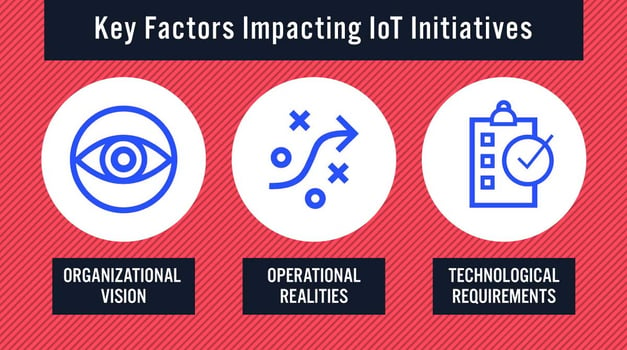It is said every company is in the technology business in some way, and that sentiment has only been heightened with the advent and meteoric rise of the Internet of Things (IoT).
Accessing, gathering, and potentially monetizing data from the most far-flung parts of a business – including its customers – is game-changing. At times, however, the allure of the IoT, or the Industrial IoT (IIoT), can promote and hinder its successful utilization – particularly among established industrial equipment manufacturers. In their eagerness to jump in and test IoT’s possibilities, some manufacturers overlook important potential organizational and strategic implications.

This blog series looks at why companies might consider building and delivering external IoT services in the products you manufacture, making your product a connected product. We examine key planning factors, the mindset, and the diligence IoT requires and discusses where Losant fits in.
For OEMs, the IoT offers exciting possibilities, including delivering IoT technology externally, beyond their own operations, to their customers. Typically, customer-facing IoT involves new capabilities built into the equipment during the manufacturing process. For the OEM, built-in IoT provides new opportunities for value, IoT data, and additional sources of revenue.
So what are the best ways to ensure successful, long-term applications of IoT?
Let’s get started:

Key Factors Impacting IoT Initiatives
Organizational Vision: IoT enables the sourcing of data from devices, then delivering that data in beneficial ways to help them accomplish more, faster. It enables both the organization and its customers to be more innovative. For most companies, getting started means searching for ways to use IoT. But it’s important the organization first considers its own strategic objectives before asking how IoT might be applied. Identifying a basis of opportunity upon which to build a business case with a true ROI estimation is a good starting point. If the IoT project is not highly relevant to the organization’s business strategy, it is easy to forget or fail to recognize what future they ever saw with IoT. With some organizations, the day-to-day work involved in simply “keeping up” with current workloads precludes them from considering the data-driven innovation possible with IoT. So it’s important to find agreement on how IoT might advance the vision and strategy before jumping in.
Operational Realities: Pursuing IoT without a clear strategic basis can result in the initiative being characterized as disconnected, complex, demanding, inefficient, experimental, and going nowhere. After all, a project without a strategy requires and occupies its own path rather than impacting the status quo. Questions of long-term operational viability, value, plans for concept expansion, and resource allocation can easily go unanswered when expectations are not met, and leadership loses interest. That’s why it is so important to secure operational commitment to an IoT project, investment, or strategy.
Technological Requirements: An IoT implementation does not happen overnight. It is technologically demanding in ways most enterprises have not experienced previously. Successful IoT may require new skilled workers, including some key roles not typically found in manufacturer environments, such as software engineers and software architects. That contradicts with the common desire or demand for internal IT staff to lead the IoT initiative, taking those critical first steps until assistance from a specialist or platform provider is clearly needed.
Because it involves real-time interfacing with devices and processes, IoT deployment naturally feeds an internally focused viewpoint, answering the question, “How can our products and processes reap the benefits of connectivity, real-time data, and continuous learning?” That mindset, though, means considering the externally focused IoT strategy — greater value for the customer from IoT embedded within products — is easily overlooked. As the technology challenge grows, so does the potential to grow value in ways and levels never-before-seen when you offer connected products. Accessing the necessary level of IoT expertise is imperative.
In part 2 of this blog, we will look at the differences between delivering and consuming IoT.
If you’d like to learn more about how Losant can help your organization meet its IoT application development needs, connect with us here.
| Download To Read the Complete Blog Series (702 KB) |
| Download To Get the Collection of Case Studies in This Series (1.48 MB) |